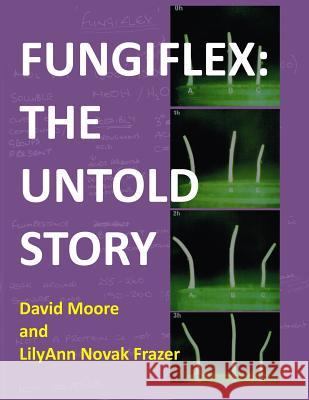Fungiflex: the untold story » książka
Fungiflex: the untold story
ISBN-13: 9781547168569 / Angielski / Miękka / 2017 / 114 str.
In the latter half of the 1990s, and into the first couple of years of the new millennium, we carried out some ground-breaking research into communication within mushroom fruit bodies by chemical signals. Because we were hoping to commercialise the research, the work was never published beyond initial patent applications, which have since lapsed. We believed at the time that we had accessed at least some of the controls of fungal morphogenesis by extracting compounds which caused mushroom stipes to bend at the point of application within hours of treatment. Using standardised bioassays, we made a start on purifying and chemically characterising the extracted substances. We worked with two components which had recognisably different activities in the bioassay. These we called Fungiflex 1 and Fungiflex 2. Our extracts caused (vertical) mushroom stipes to bend towards a drop of the extract within 1 hour of its application to the side of the stipe. This localised growth inhibition was Fungiflex 1 activity. Such stipes grew back to the vertical in about 9 hours, but then started bending in the opposite direction at the point of application of the drop. By 18 hours the stipe had bent to an angle of 90 from the vertical. This localised growth promotion was Fungiflex 2 activity. We got close to understanding the structure of these first fungal hormonal compounds but were unable to secure sufficient funding to take the research any further. Nonetheless, the scientific knowledge we revealed is still important and worthy of publication. Our research has not lost its uniqueness, nor has it been duplicated up to now. In this publication, we report in full the research we accomplished nearly 20 years ago in the hope that it might stimulate future work in the topic and prompt further advances. You could pick up the research where we left off. You could make yourself a fortune And if you do, please remember where you got the idea
Zawartość książki może nie spełniać oczekiwań – reklamacje nie obejmują treści, która mogła nie być redakcyjnie ani merytorycznie opracowana.











